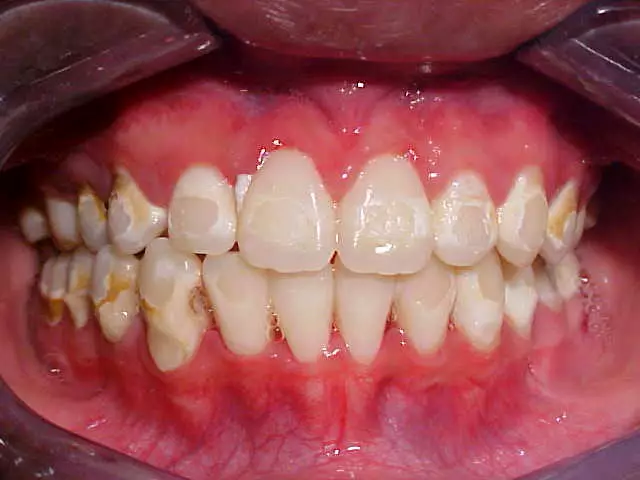- Author Curtis Blomfield [email protected].
- Public 2023-12-16 20:44.
- Last modified 2025-01-23 17:01.
Pulpitis, the complications of which are a nightmare for dentists and patients, is the most common cause of toothache.

Why is this happening
Inflammation of the nerve (in other words, the pulp), which is located in the inner cavity of the tooth, is accompanied by infection of the surrounding tissues and blood vessels. This is complemented by severe, almost unbearable pain. Often the discomfort prompts those suffering from this disease to resort to self-medication. It is better not to allow the condition of your teeth to deteriorate so much that pulpitis appears. Treatment, especially timely, of caries and some other problems of the oral cavity is much easier and painless.
Mechanical trauma to the tooth, exposure to high temperatures, systemic infections - all this can trigger the onset of this disease. But most often, inflammation of the pulp is the result of deep caries.

The first symptom is often a sharp pain that occurs at night. It can be aching and constant. Or maybe paroxysmal. Pain in one tooth or several at once increases in the process of eating. The better the patient can track and then describe the localization of pain, the morea detailed medical history will be subsequently filled in. Pulpitis can provoke pulling sensations and discomfort in the temple, neck, and middle ear. An unpleasant pulsation in the opposite side of the jaw is common.
The neglected and chronic pulpitis is much more dangerous. Treatment in this case should be based not only on the removal of the pain syndrome, but also on the elimination of the cause of the ailment. The inflamed pulp must be treated with disinfectants. The dentist then treats the diseased tooth. In some particularly advanced cases, removal may be required.

Pulpitis. Treatment of complications
The consequences of self-medication and abuse of painkillers can be quite serious. One of the most unpleasant complications that occur with a disease such as pulpitis, the treatment of which is late, is periodontitis. This is the spread of infection outside the tooth and the subsequent inflammation of the tissues surrounding it. The most dangerous thing about this process is that it can affect bone tissue. And there close to osteomyelitis. The latter is extremely difficult to treat with antibiotics and can provoke the formation of a cyst near the root of the tooth.
Pulpitis can be eliminated, but if the canal is poorly sealed (not completely) or the filling material has gone beyond its top, then the disease may recur. For effective treatment, an experienced dentist needs to perform several sequential manipulations. If the pulp is viable and inflammation in it is reversible, then firstantiseptics are used, then a bandage is applied to the tooth, and only then a filling is placed. After that, you need to take a control x-ray. If the inflammation of the pulp is irreversible, the tooth is removed, and a crown is placed in its place after the wound has healed. The best treatment for any disease is prevention and timely filling of carious cavities.






